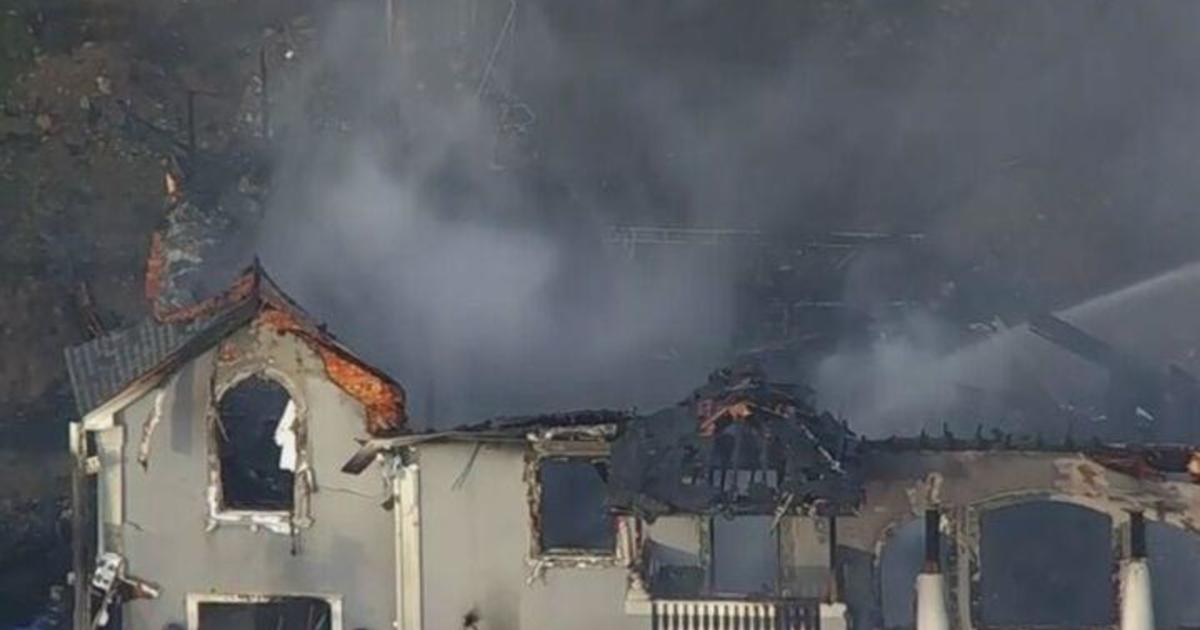NYU Artist Gets Camera Implanted In Head
NEW YORK (AP) -- A New York University arts professor might not have eyes on the back of his head, but he's coming pretty close.
Wafaa Bilal, a visual artist widely recognized for his interactive and performance pieces, had a small digital camera implanted in the back of his head -- all in the name of art.
Bilal said Tuesday that he underwent the procedure for an art project that was commissioned by a new museum in Doha, Qatar, in the Arab Gulf.
Titled "The 3rd I,'' it is one of 23 contemporary works commissioned for the opening of the Mathaf: Arab Museum of Modern Art on Dec. 30. The exhibition is entitled "Told/Untold/Retold.''
"I am going about my daily life as I did before the procedure,'' the Iraqi-born artist said in a statement.
Bilal, who is teaching three courses this semester at NYU's Tisch School of the Arts, will wear the camera for one year. It is 2 inches in diameter and less than an inch thick.
The project will raise "important social, aesthetic, political, technological and artistic questions,'' he said.
He declined to say when the camera was implanted or other details of the art installation, saying it "will be revealed to the public as part of the museum preview on Dec. 15'' and on a website to be launched on the same day, http://www.3rdi.me.
He said he chose to have it put in the back of the head as an allegorical statement about the things we don't see and leave behind.
How it all fits together is still a bit of a mystery.
The camera will capture his everyday activities at one-minute intervals 24-hours a day and then be transmitted to monitors at the museum, said curators Sam Bardaouil and Till Fellrath of Art Reoriented, who commissioned Bilal on behalf of the museum.
"He doesn't have to alter his lifestyle or what he does. In principal, he's moving on with his life,'' Bardaouil told The Associated Press from Doha. "It will be a three-dimensional, real space-and-time experience. Once the piece is revealed, you'll realize that the camera is only one aspect of the work and there are aspects as important that will be experienced.''
The project has raised challenging questions for NYU, the nation's largest private school with about 44,000 students.
"As a school of the arts, a school whose mission is to educate artists, we place a high value on his right to free expression in his creative work as an artist ...,'' NYU said in a statement.
"We also take seriously the privacy issues his project raises, its impact on our students, and the importance of preserving trust in the pedagogical relationship between a faculty member and students.''
NYU said it has had numerous "constructive and productive'' conversations with the artist and was continuing "to discuss with him the right mechanism to ensure that his camera will not take pictures in NYU buildings.''
But a number of students said they were not overly concerned about their privacy being violated.
"I don't really know what you would be protecting them (students) from, what would be happening in the classroom that couldn't be shared,'' said Erin Wahed, 22, who graduated in May with a BFA in photography but did not take any of Bilal's classes.
Seth Mrocska, who was friends with some of Bilal's students but did not have him as a professor before graduating in May, agreed, saying "It's not that there's much to hide in the classroom.''
However, he said he wasn't OK with the images being transmitted to another country and "shared across a media platform to be stored for all to view.''
Bilal said "The 3rd I'' builds on his other body of work that combines performance art, digital and body art and photography "into a unique conceptual piece.''
Many of his previous works have invited debate and controversy.
In a 2007 online installation, "Domestic Tension'' in 2007, virtual users could shoot a paintball gun at Bilal 24 hours a day. The Chicago Tribune deemed it "one of the sharpest works of political art to be seen in a long time'' and named him Artist of the Year that year.
A 2008 video game piece, "Virtual Jihadi,'' was censored by the city of Troy, N.Y. where it was shown. In it, Bilal inserted an avatar of himself as a suicide bomber hunting then-President George W. Bush. The New York Civil Liberties Union filed a claim against the city of Troy for closing the arts center showing the work.
The artist has said the work was meant to shed light on groups that traffic in hateful stereotypes of Arab culture with video games like Quest for Saddam.
In a recent live performance piece titled "...and Counting,'' Bilal had his back tattooed with a borderless map of Iraq covered with one dot for each Iraqi and American casualty. Bilal, whose brother was killed by a missile at an Iraqi checkpoint in 2004, used the piece to highlight how the deaths of Iraqis are largely invisible to the American public. The dots for the Iraqis were represented by green UV ink only visible under black light, while Americans were represented by permanent ink.
The 59,000-square-foot Mathaf museum will house more than 6,000 works of modern and contemporary Arab art from the collection of Sheik Hassan bin Mohamed bin Ali al Thani, founder of Mathaf and vice-chair of the Qatar Museum Authority.
(Copyright 2010 by The Associated Press. All Rights Reserved.)



